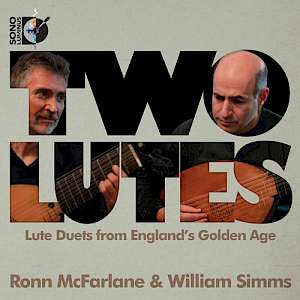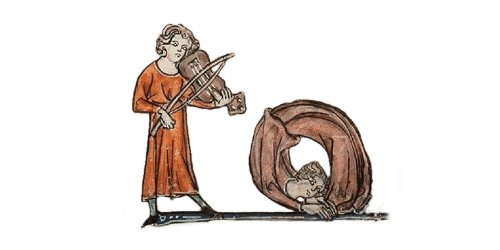 CD Review
CD Review
Two Lutes: Lute Duets from England's Golden Age Ronn McFarlane & William Simms
By Daniel Hathaway
Lute music flourished during the Renaissance, but most of the repertoire that has come down to us was writtne for single players. Ronn McFarlane and William Simms have selected twenty-seven works for lute duet from the over eighty examples that survive and have recorded them winningly for the Sono Luminus label.
Both performers are frequent visitors to Northeast Ohio. Simms was an undergraduate at the College of Wooster and both have appeared with Apollo's Fire (McFarlane will be back for "The Intimate Vivaldi" in January and February). They are fine, evenly-matched players. It would take the sharp ears of a lute specialist or a dedicated groupie to tell them apart on this disc, which has been initmately and warmly recorded and engineered by Daniel Shores. They play a 10-course lute by Ray Nurse and an 8-course lute by Andrew Rutherford.
The repertoire is a collection of songs, fantasies (or fancies) and dances (both high class Passemezo Galliards and Allmanes and a lower-class Dump), of which six pieces are anonymous. Ten are by John Johnson, six by Thomas Robinson, two each are by John Danyel and John Dowland and one is a collaboration between John Marchant and Francis Pilkington. The longest piece clocks in at four and a half minutes, the shortes is just over a minute. Thomas Robinson is the most laconic: his pieces last from one to three and a half minutes.
Who - besides the well-known Dowland - were these composers? Johnson rose the the post of "Royal Lewter" to Elizabeth I, whom he served from 1579 to 1594. Robinson worked for the Danish Court. Danyel joined the English royal household in 1612 and played for the funeral of his patron James I in 1624. The differences in their musical styles are subtle.
Whether cheerful or somber, all the pieces breathe that unmistakeable Elizabethan charm we associate with court music of the period. Marchant/Pilkington's Eccho or Allmane, as the title suggests, plays with echo effects. The anonymous Drewries accordesfeatures some eyebrow-raising blue notes at the end. Robinson'sTwenty Ways Upon the Bells suggests change ringing over a ground bass accompaniment.
As McFarlane points out, the duets fall into two categories: equal duets where the two players switch off playing the same material, and the “treble-ground” type where one plays a single-line melody accompanied by the other — the latter permits a high level of imaginative improvisation on the part of the accompanist. Since Robinson published his works as tutorials for lute students, it's possible to imagine that lute duets were musical fodder for teacher and student to play together as well as material for household musical recreation.
All ears that are tuned into Renaissance music will love this recording. Fledgling lutenists might learn of some repertoire they weren't previously aware of. Guitarists should mine it for duet music that can perfectly fit their own purposes.
Published on clevelandclassical.com September 4, 2012

